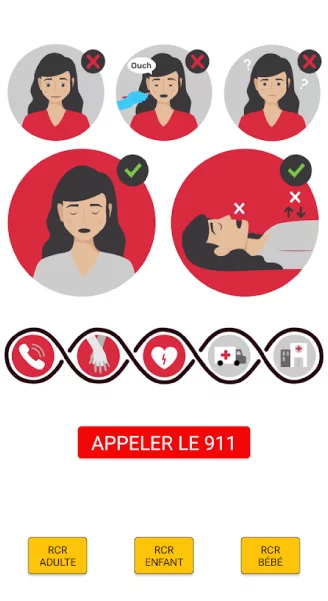
GETTING STARTED AND HOME PAGE
high-quality emergency care, i.e. CPR, in situations of suspected or confirmed cardiorespiratory arrest.
This unique application enables users to add a complementary tool to their CPR practice. Since these practices are mandatory to obtain certification, candidates can benefit from this application to perfect their techniques.
As soon as you open the application, you'll be asked to check whether you need to contact the emergency services. If you find yourself in a real emergency situation, you'll be prompted to dial 911 without hesitation.
The application offers you three (3) categories of potential victims for whom you can perform CPR.
THE VICTIM'S CONDITION
Before starting resuscitation maneuvers, it is essential to ascertain the victim's condition. To do this, the rescuer must validate certain elements.

"A" ALERT
If the victim is alert, resuscitation is not required. This is why this illustration contains a red "X".

"V" VERBAL
If the victim responds to verbal stimuli, resuscitation is not required. This is why this illustration contains a red "X".

"P" PAIN
If the victim responds to painful stimuli, resuscitation is not required. This is why this illustration contains a red "X".
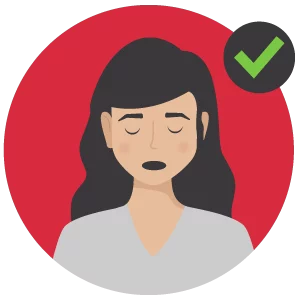
"U" UNCONSCIOUS
If the victim doesn't respond to any stimuli, chances are he/she will require resuscitation. For this reason, this illustration contains a green check mark.
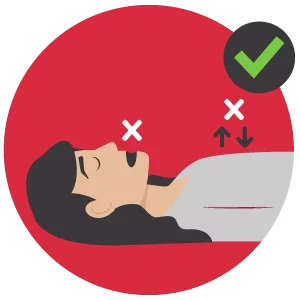
NO BREATHING OR AGONAL BREATHING
If the victim is not breathing, or does not appear to be breathing adequately, then CPR must be started without hesitation. That's why this illustration contains a green tick.
* Agonal breathing is so-called "reflex breathing" generated by the brain stem. It results from a spasm of the respiratory muscles. It is not "efficient" breathing.

NEVER FORGET TO CALL THE EMERGENCY SERVICES!
This action button automatically exits the application and takes you back to your phone application. The emergency number "911" automatically appears on your screen, so all you have to do is press the dial button to initiate the emergency call.
THE STEPS TO FOLLOW
In the event of suspected or confirmed cardiopulmonary arrest, there are a few steps to follow. These steps must be strictly followed in order to maximize the victim's chance of survival.


CALL - 911
As soon as cardiorespiratory arrest is confirmed or suspected, call emergency services immediately by dialing 911.

MASSAGE - CPR
Begin high-quality CPR maneuvers without hesitation by pushing hard and fast on the victim's sternum.
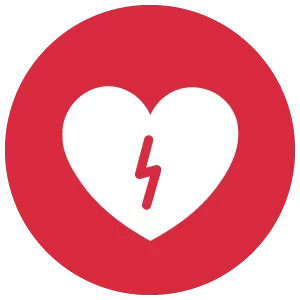
DEFIBRILLATE - DEA
Request a defibrillator (AED) and install it as soon as possible.
As soon as the electrodes are attached to the victim, let the defibrillator perform its analysis, then follow the AED's instructions.
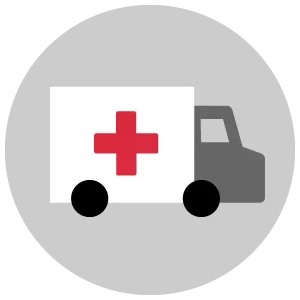
EMERGENCY CARE
Pre-hospital emergency services will provide specific care to increase the victim's chances of survival.
Transport to a hospital can then be carried out quickly and safely, while resuscitation maneuvers are performed.
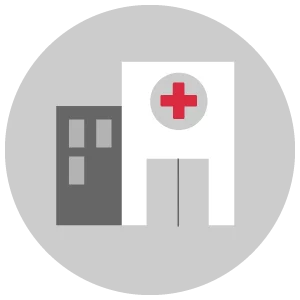
ADVANCED CARE
The hospital provides advanced clinical monitoring of the victim.
VICTIM CATEGORIES

ADULTE
From the onset of puberty, i.e. age 12 and over.
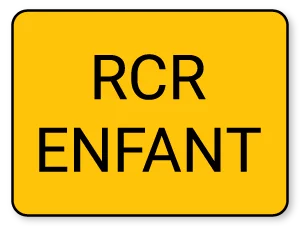
Child
From the age of one (1) year to puberty (12 years).

Infant
From hospital discharge to one (1) year of age.
ADULT
Adults have 2 options:
1. Continuous chest compressions
2. Perform maneuvers with a ratio of 30 chest compressions followed by 2 insufflations
Option 1 : Continuous Chest Compressions
When you choose to perform resuscitation maneuvers on an adult victim, you automatically enter "Continuous chest compressions" mode.
The "untrained" first responder can perform simple CPR maneuvers by pushing hard and fast on the center of the victim's sternum.
Option 2 : 30 Chest Compressions Followed By 2 Insufflations
It is also possible for the "trained" rescuer to switch to "thirty (30) chest compressions followed by two (2) insufflations" mode.
CHILD
In children, you have 3 options:
1. Continuous chest compressions
2. Perform maneuvers with a ratio of 30 chest compressions followed by 2 insufflations
3. When two (2) rescuers are present, perform maneuvers with a ratio of 15 chest compressions followed by 2 insufflations
Option 1: Continuous Chest Compressions
When you choose to perform CPR on a child, you automatically enter "Continuous Chest Compressions" mode.
The "untrained" first responder can perform simple CPR maneuvers by pushing hard and fast on the center of the victim's sternum.
Option 2: 30 Chest Compressions Followed By 2 Insufflations
The "trained" rescuer can also switch to "thirty (30) chest compressions followed by two (2) insufflations".
Option 3: 15 Chest Compressions Followed By 2 Insufflations
When two (2) rescuers are present, it is also possible for "trained" rescuers to switch to "fifteen (15) chest compressions followed by two (2) insufflations" on a child.
Baby
For infants, you have 3 options:
1. Continuous chest compressions
2. Perform maneuvers with a ratio of 30 chest compressions followed by 2 insufflations
3. When two (2) rescuers are present, perform maneuvers with a ratio of 15 chest compressions followed by 2 insufflations
Option 1: Continuous Chest Compressions
When you choose to perform resuscitation maneuvers on an infant, you automatically enter "Continuous Chest Compressions" mode.
The "untrained" first responder can perform simple CPR maneuvers by pushing hard and fast on the center of the victim's sternum.
Option 2: 30 Chest Compressions Followed By 2 Insufflations
The "trained" rescuer can also switch to "thirty (30) chest compressions followed by two (2) insufflations".
Option 3: 15 Chest Compressions Followed By 2 Insufflations
When two (2) rescuers are present, it is also possible for the "trained" rescuers to switch to "fifteen (15) chest compressions followed by two (2) insufflations" for an infant.
VENTILATIONS
ADULT
Ventilations are displayed only when you perform maneuvers in "30:2" mode.
CHILD
Ventilations are displayed only when you perform maneuvers in "30:2" or "15:2" mode.
Baby
Ventilations are displayed only when you perform maneuvers in "30:2" or "15:2" mode.

